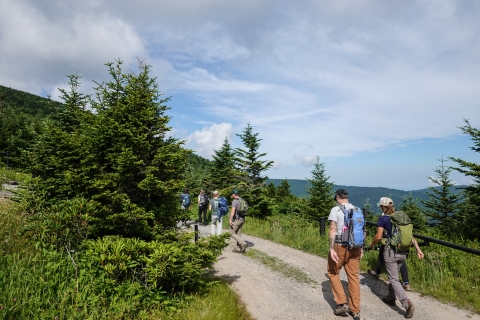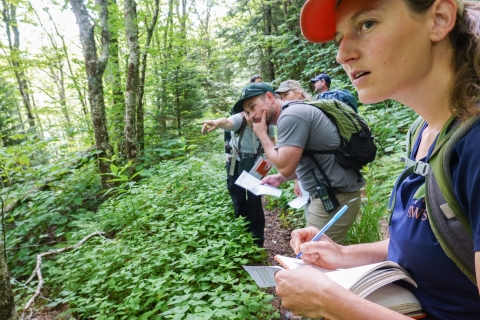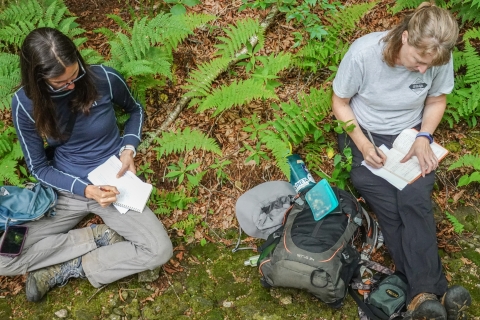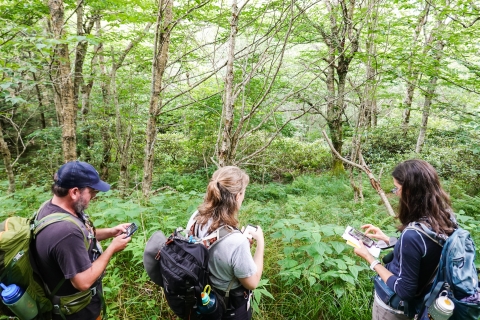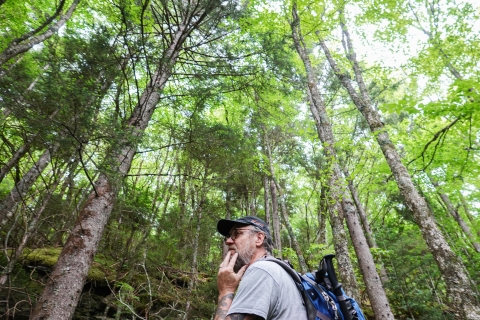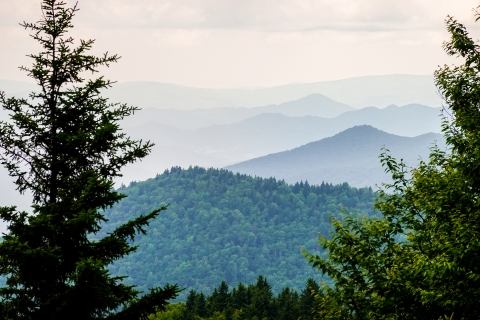Of the fifty highest peaks east of the Mississippi, 48 are in the Southern Appalachians. These are home to red spruce and Fraser fir – cold weather trees naturally found nowhere else in southern Appalachia. Indeed, Fraser fir is found nowhere else in the world.
These conifer forests were once more widespread, but have suffered – from unsustainable logging and subsequent forest fires around the beginning of the twentieth century, and in more recent times from acid precipitation and an invasive insect – the balsam woolly adelgid.
However, there is a team working to restore these forests. A recent day saw some of the region’s brightest conservation minds from organizations like the U.S. Forest Service and North Carolina Natural Heritage Program walking a trail through the Black Mountains north of Asheville, ironing out the mechanics of how to restore red spruce –talking through scenarios of planting nursery-raised trees or knocking back competition so existing spruce trees can flourish; and how to ensure the community’s imperiled species like the Carolina northern flying squirrel and spruce-fir moss spider aren’t harmed in the process of improving their habitat.
The Black Mountains will hopefully see on-the ground efforts like those underway at other high-elevation areas in the region.


